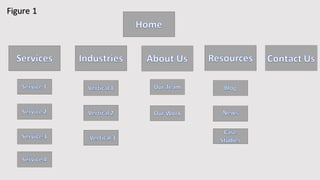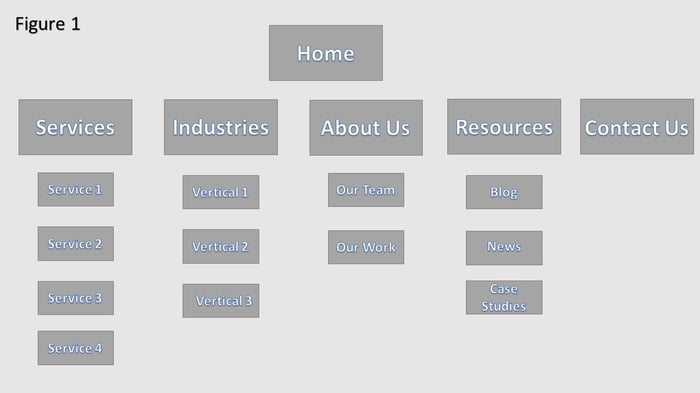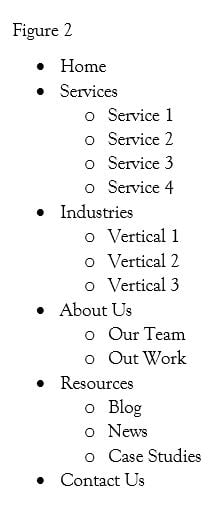How To Scope a Website Redesign Project Like a Pro


Two of my primary roles at Revenue River are to evaluate new business and to educate potential customers. While it is important that I ensure every sales opportunity would make a good fit with our team and that these potential clients have the budget and determination to invest in their own growth, those aren’t the only things that matter. It is also important that I help shape the mindset of each potential client. It is up to me to make sure that every new customer understands how we view these challenges, how we tackle these types of problems, and why we do the things we do. If we don’t have alignment on those three things at kickoff, our teams will be off to a terrible start. So to that end, I will be spending this week discussing the full process for evaluating a website design project. This will help you clarify your needs internally as well as help you speed up the process of evaluating your redesign partners. As taught by the late Dr. Stephen R. Covey, begin with the end in mind, and you’ll find the path to success in that project to be much more direct.To begin with, we’ll need to make a couple of assumptions. First, let’s assume you are in the market for a website redesign. That means your company has an existing site that is no longer up to par, and someone in charge has determined it’s time to make a change. Second, let’s assume you don’t have the bandwidth or abilities to do this work in-house. You want to improve your website, and you are looking for an external resource to help you do so. Now, I’m going to help walk you through my experiences from having hundreds of these conversations with clients from all types of industries. These are the questions I’m always asking. I'll help you think through all the important decisions, so you can easily communicate that to agency reps and more effectively filter them based on your needs. If you can understand what you truly need before reaching out to agency partners, you are guaranteed to make that process as efficient and effective as possible.
Begin with the Why
Most of my sales interactions begin with a conversation about goals. Why is your company trying to redesign the website? What are you hoping to gain? What is the end goal of this project? Rarely is the answer simply to make them something more attractive because their current site is ugly. While that can be true, it is more of a symptom that the actual problem. So that certainly isn’t their true goal.
Most often companies want to redesign their website because they know that new business can be found from digital sources. They know that in order for their business to scale, they need to create funnels of new customers coming from the web. According to the State of Inbound 2018 report, “Google is responsible for 94% of total organic traffic.” Also, “only about 22% of businesses are satisfied with their conversion rates.” So if you want to increase your website leads, you need to help people find you. A conversion-oriented website optimized with a modern SEO strategy should act as the foundation of your marketing efforts. So before you take the time to craft this new website, you should first have a clear understanding of what the website is supposed to do. Who you want it to motivate, and what you want them to be motivated to do? If you can begin this process with a clear understanding of the website’s true purpose, the end result will be much more likely to succeed at giving you what you really want.
Next comes the Internal Limitations
Once you’ve nailed down your goals, it’s time to discuss any limitations in place. I can’t begin to tell you how many people I’ve spoken with have asked me flat out, “What does a website cost?” At the risk of sounding curt, it depends. There are a hundred websites my team could create for any given company. That’s why we begin with establishing the purpose of the site. Then we move on to the limitations like budget, timeline, and internal resources.
Will we be reusing existing content from the site? If we need new content, can your team produce it if we direct you on the topic and length? Is there an established budget for this project? Is there a hard ceiling that you can't go over? What are you hoping to spend? Next, what is your timeline? Is there a hard launch date? Are there any external factors we need to discuss? Finally, what is the decision making process? Are you in charge, or is someone else making the call? What about the new sitemap? Is that something you can control, or does that have to be approved by a committee first? Because there is no reason to spend time mapping out the ideal user-experience of your new site only to have it transformed into something entirely different by a committee whose members lack the context behind what the website is truly supposed to do. A phrase to remember: a camel is a horse designed by a committee. (That last part may sound silly to some more nimble businesses, but it is unfortunately common in large organizations.) Get everyone bought in on the purpose of the site first, and let the design by determined by the ideal user experience. Once we understand your company’s internal limitations, we can start to map out how your new site should be arranged.
Where will this site live
The next item on the docket is to determine what platform the new site will be built in. There are tons of platforms at a variety of prices that contain various tools. What do you want to do with the site? Do you want it to grow over time? Do you need to make regular changed, or do you just want to set it and forget it. If it doesn't need to evolve or do much, you could use a cheaper less expensive platform. If you are trying to grow your business by investing in digital marketing, chances are you need something better. Once we understand what your goals are, we can recommend where it should live. Just because your Wix site is doing an okay job right now doesn’t mean it will be able to scale with you over the next couple years. And just because your WordPress site has blog, landing page, and form tools doesn’t mean it’s the best platform to house your digital marketing efforts moving forward. Chances are that investing in the slightly more expensive platform offered by HubSpot would be a better decision for the long term digital marketing growth system you are hoping to build, but again, it depends on a variety of factors like budget, timing, and desired functionality.
Show me your ideal sitemap
This is the point in the sales process where I am able to separate the pros from the average Joes. The average Joes come into our discussion without first mapping out the pages they want included on the new site. They seem to think that is the agency’s job. Now, don't get me wrong, I’m always happy to help. I’ll walk you through the process to build your new sitemap and make recommendations along the way. But the pros have already thought through this because it is much easier to ask for what you want when you already know what that is.
Building a sitemap doesn’t have to be some impressive work of art. In fact, it doesn’t even have to be a traditional diagram like in Figure 1 at the top of this article. It can simply be an outline in a word document or an email like in Figure 2. The point is to determine which pages you want included, as well as to filter them between those that need their own unique design and those that can share a template. For example, if your business offers five different services, you don't necessarily need a unique design for each. Just build out the service page once, and then it can be cloned out four times and filled in with the appropriate copy and imagery. That way you can ensure your primary pages are receiving the attention they deserve while also taking advantage of the template and cloning capabilities of your platform. Our job is provide you with the website you need in the most efficient way possible.
Going through this process internally before engaging an agency will be incredibly beneficial to your company, but more importantly to you. By first reflecting on the purpose of the new site, you will be in the right mindset to craft a truly effective user-experience for your audience. So if you are going to be tackling a web design project in the near future, I encourage you to spend some time thinking through these things first. That will help you to clearly communicate what you are looking for to any external teams you might be evaluating. And when you are ready to begin evaluating partner agencies like our team at Revenue River, give our team a shout, and schedule a time for us to chat.

